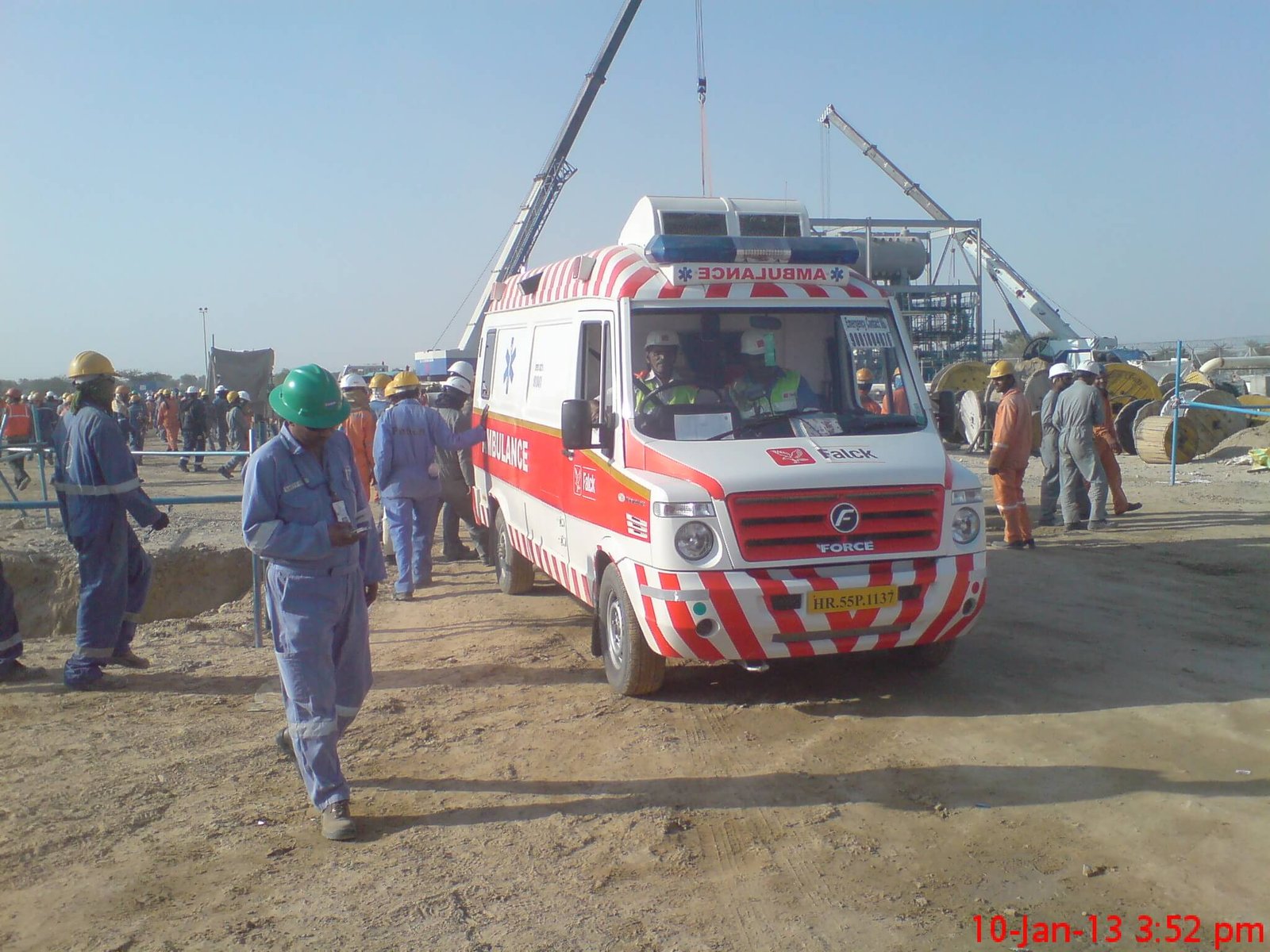U/s. 5 and 7 of the Explosives Act 1884, the Central Government notified (PRESSURE VESSELS RULES 1981) rules w.e.f. 5-2-1981. They have 8 chapters, 69 rules. 3 appendices, 2 schedule and 5 forms.
Contents
The rules were amended in 1993, 2000 and 2002.
Chapter-1: Preliminary (R. 1 to 11 A): PRESSURE VESSELS RULES 1981
Definitions: Out of (a) to (z) definitions, majority are scientific and therefore they are reproduced below.

- “Permanent Gas” manner a gasoline whose important temperature is lower than 10°
- “Liquefied Gas” approach any gasoline that can be liquefied by means of manner of pressure above 0°C, but may be absolutely vaporised at the same time as in equilibrium with regular atmospheric pressure (760 mm HG) at 30°
- Cryogenic liquid manner liquid form of everlasting gas having normal boiling factor underneath minus 165°
- Critical temperature way the temperature above which gas can’t be liquefied through the utility of stress on my own.
- “Compressed gasoline” approach any permanent fuel, liquefiable fuel or gasoline dissolved in liquid or cryogenic liquid beneath stress or gasoline combination, which in a closed strain vessel sporting activities A pressure exceeding one pressure (Gauge) at the maximum running temperature and consists of Hydrogen fluoride. In case of vessels without insulation or refrigeration, the maximum working temperature shall be considered as 55°.
- “Design” consists of drawings, calculation, specifications, models, codes and all particular records important for the complete description of the stress vessel and its manufacturing.
- LPG i.e. Liquefied Petroleum Gas includes hydrocarbon gases in liquefied state at normal ambient temperature by the application of pressure, and conforming to the IS: 4576.
- Dispenser means equipment installed in LPG dispensing station, meant for dispensing LPG as automotive fuel to motor vehicles.
- “Design strain” means the pressure used in the layout calculations of a vessel for the cause of determining the minimum thickness of the numerous element elements of the vessel.“Filling density” method the ratio of weight of liquefiable fuel allowed in a stress.
- “Filling density” technique the ratio of weight of liquefiable gas allowed in a stressvessel to the weight of water that the vessel will keep at 15°.
- “Flammable compressed Gas” manner gas 13 percentage or much less of which while combined with air bureaucracy a flammable aggregate or whose flammable range with air is extra than 12 percentage.
- “Gas Free” close to a strain vessel manner the attention of flammable or toxic gases or every if such strain vessel is in the secure limits positive for Humans to go into and carry out warm artwork in such vessels.
- “Pressure vessel or Vessel” technique any closed metallic field of anything form supposed for the storage and shipping of any compressed gasoline that is subjected to inner pressure and whose water ability exceeds 1000 litres and includes inter connecting parts and components thereof up to the first point of connection to the connected piping and fitting but does not Include boxes wherein steam or different vapour is or is meant to be generated, or water or other liquid is or is supposed to be heated via the software of fire or the product of combustion or by electrical means, heat exchangers, evaporators, air receivers, steam-type digestors, steam-type sterilises, autoclave, reactors, calorifiers, pressure piping components such as separators or strainers And vessels containing a liquid below a blanket of compressed inert fuel.
- “Safety relief tool” method an automated pressure relieving tool actuated by way of the strain upstream of the valve and characterised by means of completely opened pop motion, meant to prevent the rupture of a strain vessel below sure situations of publicity.
- “Source of ignition” technique bare moderate, fires, exposed incandescent material, electric powered welding arcs, lamps aside from those specially permitted to be used in flammable atmos water Capacity” means potential in litres of the pressure vessel whilst completely phere, or a spark or flame supplied by way of any way.
- “Water Capacity” manner capability in litres of the strain vessel even as completelyfilled with water at 15°C.
The vessel should be manufactured as per IS 2825 or code specified u/r 12 and approved by the CC otherwise it cannot be filled or transported. Any person seeking to manufacture such vessels should apply to the CC in Appendix, with a scrutiny fee of Rs. 500 (R.4).
Storage transport and dispatch as consistent with licence only (R. 5). Repair after approval from CC and as in step with IS-2825 (R.6). Before using or refilling any vessel for flammable gases, purging an inert gas or by the gas to be filled with safe venting is necessary (R. 7).Prohibition of using a person underneath 18 years or intoxication and smoking or allowing supply of ignition or any flammable gas (R. 8 & 9). These rules are to be complied with and precaution to prevent accident are necessary (R. 10), Supervision is also necessary (R. 9A).
Procedure for paying fees is given u/r 11 and that for applying recognition as competent person of Inspector in Appendix III to the CC is given u/r 11-A.
Chapter-II: Construction and Fitments of Pressure Vessels (R. 12 to 20): PRESSURE VESSELS RULES 1981
Design Code – For design, construction and testing IS:2825 or other code approved by CC. (R. 12).
Design pressure should not exceed the vapour pressure at 55°C if liquefiable gas is to stored or the developed pressure at 55°C if permanent gas (whose critical temp is <10°C is to be stored. For an insulated vessel it may be reduced corresponding to the maximum temperature likely to be attained by the gas in the vessel. Maximum allowable service pressure with allowances for cryogenic liquid (R. 13).
Design for low temperature should be as per code mentioned in R. 12. Refrigeration capacity should be adequate to maintain the vapour pressure below the design pressure and the set-pressure of a safety valve. Insulation material should be approved by CC, cladding thickness more than 3 mm, water-tight and thermal conductance at 15°C should not exceed the limit prescribed by the CC (R. 14).
Filling capacity & pressure as per rule 15. The maximum quantity of liquefiable gas to be filled should not exceed the filling density (i.e. the ratio of the weight of the gas to the weight of water that the vessel will hold at 15°C) and the vessel should not become liquid-full due to expansion of the gas at 55°C if the vessel is un-insulated or at such highest temperature attainable in case of refrigerated or insulated vessel. A permanent gas shall not be filled in excess of design pressure of the vessel (R. 15).
Marking on vessels should indicate (1) Manufactures name and identification (2) Standard or code (3) Official stamp of the Inspector (4) Design pressure (5) Date of tests (6) Hydrostatic test pressure (7) Water capacity (8) Gas capacity and (9) Name or chemical symbol of the gas. (R. 16)
Painting with reflecting surface (R. 17)
Fittings should include Pressure Gauge, Temperature Indicator, Safety Valve, Level Indicator and drains. Connections as per code in rule 12. There should be two (or more) pressure relief valves (SV) spring loaded type, set to start at a pressure below 110% of the design pressure and total relieving capacity to keep the pressure inside the vessel less than 120% of the design pressure. Connection to these Safety Valve should be of sufficient size to allow the required rate of discharge. There should be shut off valve between Safety Valve and the vessel. For static (not mobile) vessels of more than 4500 litre water capacity outlet of Safety Valve should extend 2 metre above the top of the vessel and at least 3.5 metre above the ground level. They should have loose fitting rain caps. Safety Valve should be tested once in a year by a competent person and record is kept.
All liquid and vapour connections on vessels (except Safety Valve, plugged openings and where diameter is less than (1.4mm) should have shut-off (stop) valves as close to the vessel as practicable.
There should be an emergency shut off valve (for both liquid and vapour phase) such as an excess flow valve, automatically operated valve or a remotely controlled valve which can be operated from a safe place and which shall not fail. Such emergency shut off (stop) valve is not required if liquid connection is of less than 3 mm dia and vapour connection is of not more than 8 mm dia. Excess flow rate should easily allow the normal flow rate (should not cause valve chatter) but should have closing rate below the rate of discharge from a fracture of the line it is protecting calculated under the worst condition possible.
Liquid level gauge should show a ready amount of liquid at any time. One maximum level indicator should also be provided. Bleeding device (rotary tube, fixed tube, slip tube) cannot be completely withdrawn in normal gauging operations. (R. 18).
Hydraulic testing of all vessels by a competent person at a pressure marked on the vessel is necessary at 5 years intervals (2 years for corrosive or toxic gases). Where water lest is not possible or tolerable CC may permit pneumatic testing along with NDT. Pneumatic test pressure for cryogenic pressure vessel shall be 1.1 times MPWP. Before each pressure test the vessel shall be thoroughly cleaned and examined internally and externally for surface defects, corrosion, foreign matter and hazardous material (e.g. pyropheric sludge). After test it shall be thoroughly dried internally and stamped with marks, figures and test date. A vessel failing to pass hydraulic test or found unsafe for use shall be destroyed or rendered unsuitable under intimation to the CC. The competent person shall give a test certificate in prescribed proforma. A record shall be kept of all such tests (R. 19, 20).
Chapter – III: Storage (R. 21 to 33):
General: Compressed gas vessels shall be above ground, first stage regulating equipment in open vessels should not be one above the other, vessels in a group should have their longitudinal axes parallel no location within petroleum or flammable liquid area, sufficient space between two vessels to permit fire fighting operations, two or more vessels in batteries should have their top surface on the same plane and vessels facing their dished ends should have screen wall in between them. Floor slope, sump, dyke and dimensions for corrosive, flammable or toxic gases in liquefied state (R. 21).
Minimum Safety Distances: PRESSURE VESSELS RULES 1981
Foundations as prescribed in R. 23. Supports should be so anchored, weighed or at height to avoid flotation due to flood water. Bottom supports up-to 45 cm (max.) shall be encased in fire-resisting materials of adequate thickness.
Fencing of at least 2 metre height with 2 exits opening out ward and not self locking. The fencing should enclose vessels, pumping equipment, vaporisers and loading/unloading facilities (R. 24).
Cleanliness An area of 3 metre around the vessel shall be free from combustible material such as weeds and grass (R. 25).
Earthing Vessels and pipelines should be efficiently earthed and bonded (R. 26).
No smoking Notice with letters at least 5 cm size fixed on fence surface visible from outside where flammable or oxidising gases are stored (R. 27).
Fire Protection for the storage of flammable compressed gases should include sufficient supply of water, hydrants, hoses, mobile equipment, fixed monitors or automatic spray systems, control valves outside the danger area, jet & fog nozzles and at least 2 DCP type fire extinguishers of 9 kg each near each point of access to the installations. Special provision for LPG station (R. 28).
Loading and Unloading Facilities like pumps, compressors, transfer systems and hoses as prescribed in R. 29. Remotely controlled shut-off valve for the vessel being filled or emptied. High level alarm interlocked with automatic shut off valve to prevent overfilling. The hoses should withstand not less than 4 times the maximum operating flow pressure in them and should be mechanically and electrically continuous (R. 29).
Transfer operation should follow the detailed instructions u/r 30. Supervision by a competent person for compliance of these rules is necessary. Precautions to check vessel before and after filling, condition of piping, valve, fittings, hoses, vehicle and its earthng prevention of overfilling, removal of spillage etc (R. 30). Provision for LPG stations (R. 30A & B).
Electrical wire should not pass over any storage vessel and all electrical wires installed within the safety zone or storage of flammable gases should be of approved insulated cables type, In a pump room for pumping flammable gases, all electric apparatus and fittings should be flameproof conforming to IS:2148 and frames shall be earthed. Lamps should have flameproof glass fittings conforming to IS:2206 (Part-I). Portable hand lamps should have been approved by the CC (R.31) Classification of hazardous area in Zone 0, 1 & 2 (R. 31 & B).
Lighter should be approved type otherwise no operation to be carried out during night (R. 32).
Safety Certificate in the prescribed proforma signed by a competent person should be furnished to the licensing authority (R. 33).
Chapter – IV: Transport (R. 34 to 44): PRESSURE VESSELS RULES 1981
This chapter is applicable for the transport of compressed gas by vehicles (R. 34). Drawings of the vehicle and its special fittings should be got approved by the CC (R. 35). Design considerations are given in rule 36 to 39. Protection of valves, accessories, piping, fittings, pumps and vessel are suggested. Mechanical , electrical and general design safety requirements are prescribed. Product should be marked on the vessel (R. 40). Fire protection includes prohibition of smoking or carrying matches, lighters or any flammable substance (R. 41). Driver should be trained one. While loading/unloading presence of a competent person is necessary. Safe perking during overnight stop (R. 42). A safety certificate in prescribed proforma signed by a competent person shall be furnished to the licensing authority before using any vehicle for such transport (R. 43). The vehicle shall be maintained in a fit condition and examined every 6 month by a competent person and certified in a prescribed proforma (R. 44).
Chapter-V (R. 45 to 64) is regarding Licences, Chapter VI (R. 65) for exemption, Chapter VII (R. 66 to 68) for Accidents and Inquires and Chapter VIII (R. 69) for powers of CC and subordinate controllers, of District Magistrates, the Police Commissioners and their subordinates.
Accident should be reported to the CC (within 24 hours) and forth with to the nearest police station.
Appendices are as under:
Appendix-I: Application to manufacture a vessel.
Appendix-II: Qualification and Experience of Inspector and Competent person.
Appendix-III: Application for recognition as competent person.





